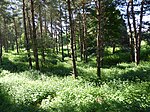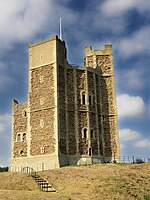Sudbourne

Sudbourne is a village and civil parish in Suffolk, England, located approximately 2 miles (3 km) north of Orford. All Saints' Church dates from the 14th century but was much restored in 1879. It is a grade II* listed building.Between 964 and 975 King Edgar and his wife Ælfthryth granted Bishop Æthelwold of Winchester an estate at Sudbourne on condition that he translated the Rule of Saint Benedict from Latin into Old English.According to Sam Newton, Sudbourne was the location of the almost forgotten Battle of Newmouth between the English and the Danes in the early eleventh century.During World War II Sudbourne and the neighbouring village of Iken were used as a battle training area in advance of the D-Day landings in June 1944. The inhabitants were relocated returning sometime after the war finished.Sudbourne has Captain's Wood, a nature reserve owned by Suffolk Wildlife Trust, and Crag Farm Pit which is listed as a Site of Special Scientific Interest in Suffolk. Sudbourne is also the birthplace of Sir Thomas Rush.
Excerpt from the Wikipedia article Sudbourne (License: CC BY-SA 3.0, Authors, Images).Sudbourne
Snape Road, East Suffolk
Geographical coordinates (GPS) Address Nearby Places Show on map
Geographical coordinates (GPS)
| Latitude | Longitude |
|---|---|
| N 52.122548 ° | E 1.523751 ° |
Address
Snape Road
Snape Road
IP12 2AT East Suffolk
England, United Kingdom
Open on Google Maps











